I would like to solder the following TRRS connector, which seems to be more difficult than the usual TRS connectors:

I already know the order of the connections (TRRS = left, right, gnd, mic), what I would like to know is how to make the solder neat.
I tried putting the wires coming off to the side and it was messy and took a while to get it right such that the cover would fit back on. What is the correct way to tackle this solder job? Should I be guiding the connections sideways or straight? Do I need a smaller soldering iron because I am melting the plastic?

The idea of using magnet wire to make the connection has been offered, but I am not clear on how to do this in a way that will not interfere with the casing of the connector.
EDIT:
I have found a video that deals with soldering this connection, albeit for small headphone wires. The technique used is to put a drop of solder on each contact before pressing in the tinned wires (still quite tedious). I suppose this means that the connection was designed for smaller wires and I will have to either splice to a different cable together (yuck) or look for a different component.
I am still interested for any answers which would allow the pictured cable and TRRS to join together neatly.